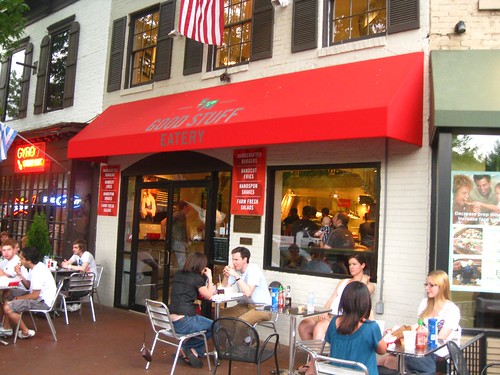 |
| View from the northeast side of the Tidal Basin |
This memorial might be my favorite of all that I've seen so far. It's very beautiful, and I know will be even more beautiful now that the cherry blossoms are starting to bloom. There's one problem though - it's far far away. From the Washington Monument, which is near the center of the National Mall, it is about a mile walk. Seeing it from afar is possibly prettier than up close, but it is definitely worth the walk.
 |
| Approaching the memorial from the southwest Virginia side |
To get to the memorial, you need to cross a bridge over the Tidal Basin. After crossing the bridge, a path takes you to the side of the memorial facing Virginia. My family and I entered the memorial through the lower level where you'll find small exhibits telling you stories of Jefferson's history and, of course, a gift shop. Then we took an elevator up to the portico, where you'll find a 19-foot-tall, 5 ton bronze statue of Thomas Jefferson. On the interior walls are are five quotations taken from Jefferson's writings, including the Declaration of Independence:
"We hold these truths to be self-evident that all men are created equal, that they are endowed by their Creator with certain inalienable rights, among these are life, liberty, and the pursuit of happiness..."
When you leave the portico, you go down a whole bunch of stairs to a plaza, looking out onto DC and the Washington Monument.
Some facts about the Jefferson memorial:
- It was modeled after the Pantheon in Rome.
- Construction started in 1939 and was completed in 1943.
- The statue was added in 1947. It was not finished in time for the 1943 dedication due to material shortages during WWII, so a plaster cast painted to look like bronze was temporarily used instead.
- It's ranked 4th on the List of America's Favorite Architecture (coming in behind the Empire State Building, White House and Washington National Cathedral)
- The site of the memorial used to be a popular beach for DC locals
- Building the memorial required the removal of cherry blossom trees, which caused a lot of public controversy.




















